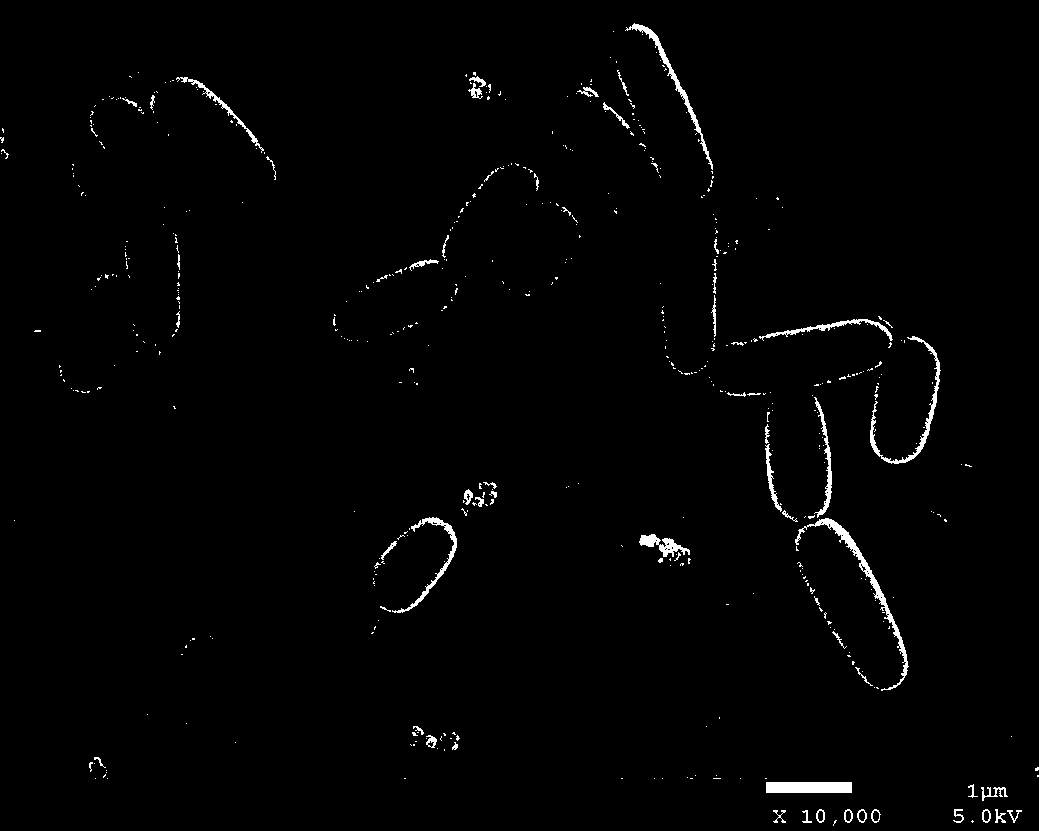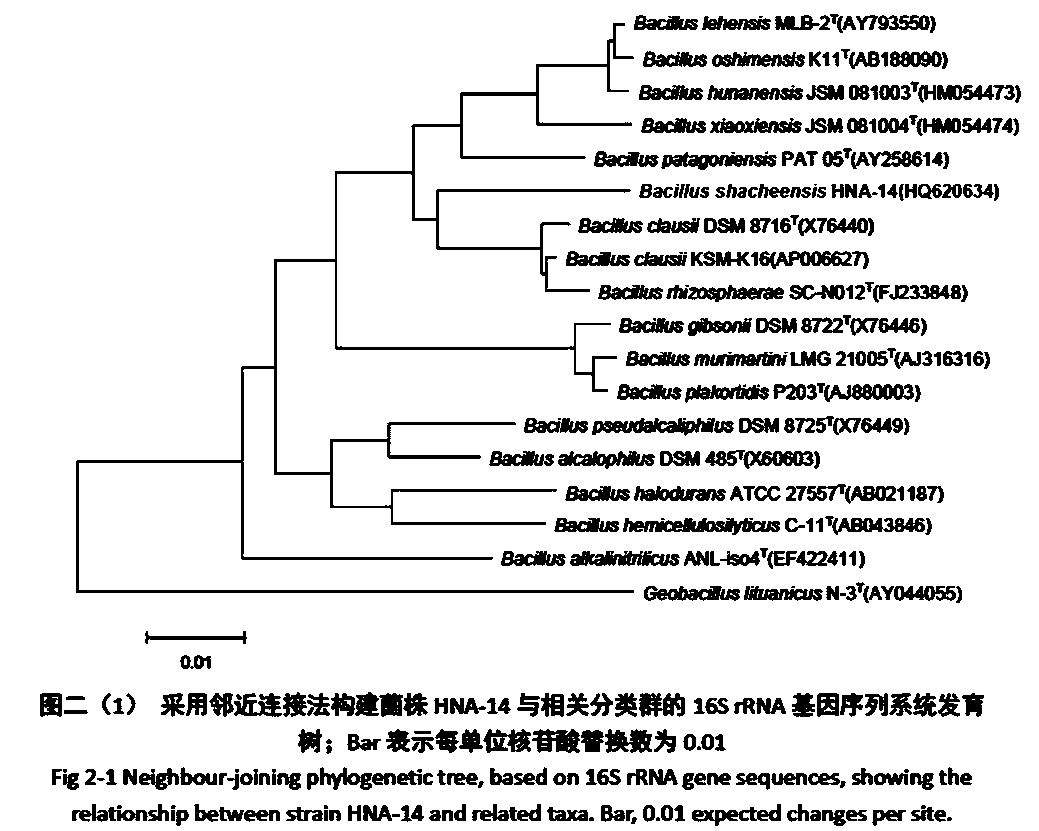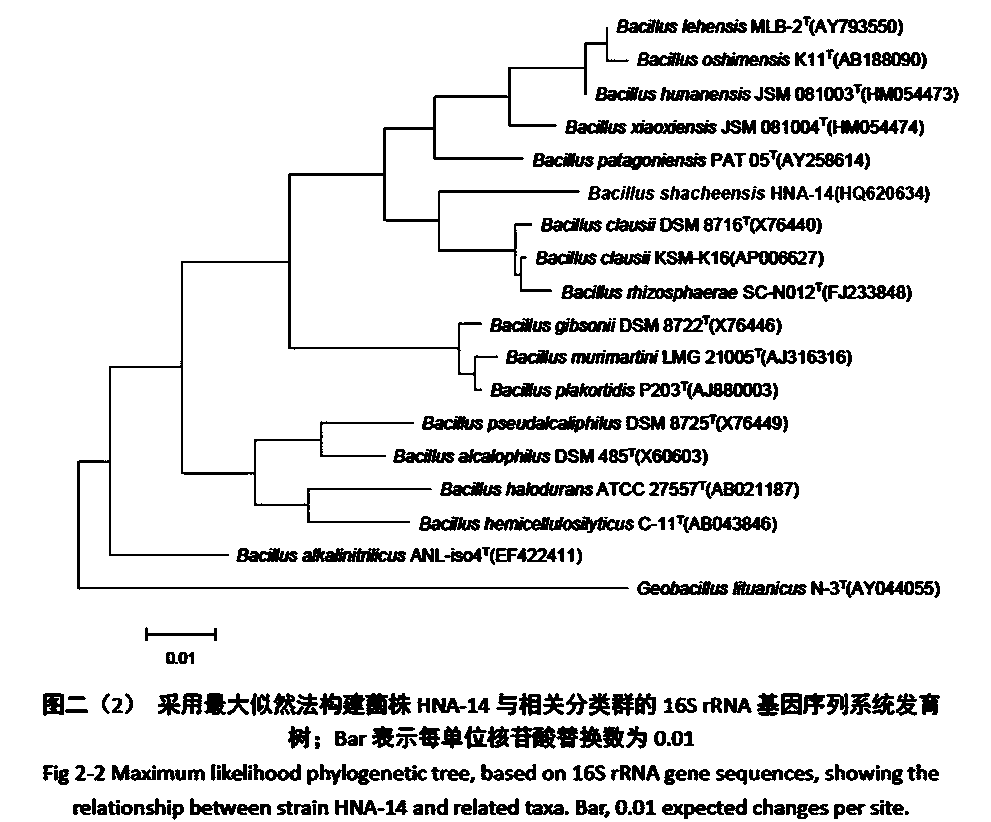Bacillus shacheensis and application thereof
A technology of Bacillus serrata and bacillus, applied in bacteria, microorganisms, biochemical equipment and methods, etc., can solve problems such as little effect
- Summary
- Abstract
- Description
- Claims
- Application Information
AI Technical Summary
Problems solved by technology
Method used
Image
Examples
Embodiment 1
[0023] Example 1: Screening and isolation of Bacillus shachei
[0024] Sample collection and strain screening and isolation
[0025] The samples were collected in Shache County, Xinjiang Uygur Autonomous Region. The samples come from multiple areas, distributed between 76°1'57" to 77°46'30" east longitude and 37°27'30" to 39°15" north latitude. The soil 5-10cm from the surface was collected in a sterile glass bottle, air-dried, ground, sieved, and stored at 4°C for subsequent separation. The screening medium was phenol-enriched medium (PT), humic acid-enriched medium (HVA), sodium molybdate-enriched medium (HNA) and high-salt-enriched medium (YCSS), and the purification medium was pancreatic Peptone Soy Broth (TSB+10% NaCl), strains were screened by inoculating different enrichment media. Add 1 g of the soil sample into a shaker flask filled with 25 ml of liquid medium, and culture it with shaking at 28°C for 7 days. Then draw the enrichment solution with a pipette gun, ...
Embodiment 2
[0036] Embodiment two: Bacillus shachei HNA-14 T = CICC 10559 phenotypic characteristics
[0037] by BIOLOG GEN The MicroStation automatic microbial identification system obtained the carbon source utilization of HNA-14 as shown in the table below. The reference strain of HNA-14 is Bacillus clausii DSM 8716 T
[0038] Carbon sources available: D-maltose, D-trehalose, D-cellobiose, gentiobiose, sucrose, D-turanose, stachyose, tetrazolium violet, D-raffinose, α-D - Lactose, β-methyl-D-glucoside, D-salicin, D-sorbitol, D-arabinol, inositol, pectin, D-gluconic acid, D-glucuronic acid, glucuronamide, L-lactic acid, D-malic acid, L-malic acid, lithium oxide, Tween-40, alpha-hydroxybutyric acid, alpha-hydroxybutyric acid, beta-hydroxybutyric acid, acetoacetic acid, propionic acid, acetic acid, butyric acid Sodium and sodium bromate; unavailable carbon sources: dextrin, vancomycin, tetrazolium blue, D-melibiose, N-acetyl-D-glucosamine, N-acetyl-β-D-mannosamine, N -Acet...
Embodiment 3
[0039] Embodiment three: Bacillus shachei HNA-14 T = CICC 10559 genome extraction and 16S rDNA sequencing
[0040] The total bacterial DNA was extracted by SDS method, the 16S rRNA gene sequence of the strain was amplified by PCR method, and the DNA sequencing was completed by Shanghai Sangon Bioengineering Technology Service Co., Ltd. Go to the GenBank (http: / / www.ncbi.nlm.nih.gov / ) database to submit the partial sequence of the 16S rRNA gene measured by each strain for registration to obtain the sequence number. Then perform BLAST comparison on NCBI (National Center for Biotechnology Information) to find the strain with the closest relationship. The sequences of the corresponding strains with the closest relatives were compared by BioEdit, and then the Neighbor-Joinin (N-J) method and the maximum likelihood method (ML method) were used to construct the phylogenetic tree on the software MEGA 5.0, and the bootstrap of the phylogenetic tree was 1000. The corresponding p...
PUM
 Login to View More
Login to View More Abstract
Description
Claims
Application Information
 Login to View More
Login to View More - R&D
- Intellectual Property
- Life Sciences
- Materials
- Tech Scout
- Unparalleled Data Quality
- Higher Quality Content
- 60% Fewer Hallucinations
Browse by: Latest US Patents, China's latest patents, Technical Efficacy Thesaurus, Application Domain, Technology Topic, Popular Technical Reports.
© 2025 PatSnap. All rights reserved.Legal|Privacy policy|Modern Slavery Act Transparency Statement|Sitemap|About US| Contact US: help@patsnap.com



